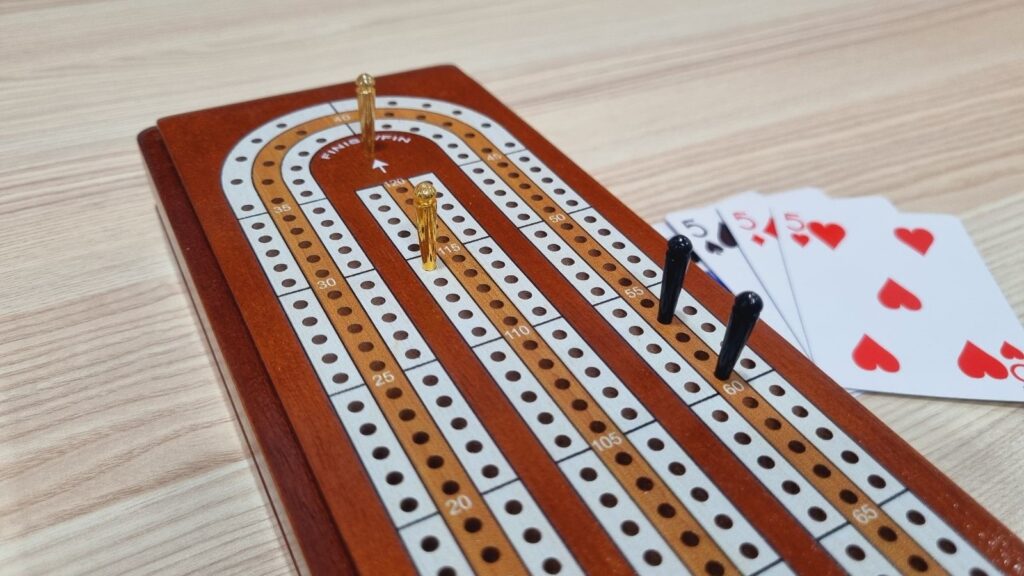- You are here:
- Home »
- Cribbage
- » Double Skunk In Cribbage. What Is It?

Double Skunk In Cribbage. What Is It?
You’re just getting into cribbage and you have probably never heard of the term “skunk”. In cribbage, a skunk happens when a player wins and is ahead of their opponent by a margin of 30 points or more.
In other words, a player gets skunked if they are behind point 90 by the time their opponent wins the game at point 121. Getting skunked is a very humiliating experience for the loser, but a very impressive feat for the winner.
But do you know what is much more humiliating than getting skunked? Yes, you’ve guessed it – getting double-skunked!
What Is A Double Skunk In Cribbage?
In cribbage, a double skunk happens when a player wins the game when their opponent is behind by 61 points or more.
This exceedingly rare occurrence is extremely humiliating for the double-skunked loser but a truly impressive feat for the winner. So if you are ever fortunate enough to double skunk your opponent, be sure to savor the moment or brag about it for the rest of your life.
Nevertheless, double skunks are extremely rare, and even the best cribbage players out there have probably managed a handful of them throughout their careers.
How Do Double Skunks Happen?
If you are curious about how a double skunk can occur in a game of cribbage, here is an example:
- The winning player has a very good hand, with multiple point-scoring combinations.
- The losing player makes quite a number of mistakes, such as playing cards that allow the winning player to score a lot of points.
- The winning player is able to peg out early before the losing player scores 91 points.
As a result of all these factors, the winning player has won before the losing player has had any chance to peg any points – double-skunked!
What Is A Good Hand For A Player To Double Skunk?
- The winning player has a royal flush for 15 points
- The winning player has a pair and a four-of-a-kind
- The winning player has 12 points and a four-of-a-kind
- The winning player is able to score some points on the crib, while the losing player does not score any points on the crib
Double skunks are a part of what makes cribbage such a challenging and exciting game. They are a reminder that even the best players can be beaten and that even the smallest mistakes can have big consequences.
Double skunks are not included in the official rules of cribbage, but they are a popular variation of the game that can be a lot of fun to play.


